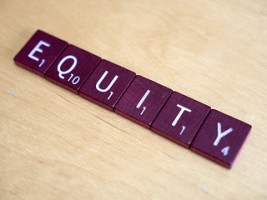 Last month I attended Americans for the Arts’ convention in Chicago. It was a great event in a great city. As usual, it sparked a number of thoughts about the present and future of the arts and, as has become my habit, I intend to reflect on the experience in a series of posts here.
Last month I attended Americans for the Arts’ convention in Chicago. It was a great event in a great city. As usual, it sparked a number of thoughts about the present and future of the arts and, as has become my habit, I intend to reflect on the experience in a series of posts here.
This post considers the conference’s remarkable focus on diversity and equity. The number of sessions and the amount of conversation addressing these issues appeared to be at an all-time high. AftA has for several years been inching its way toward grappling with questions of diversity, inclusion, and equity at its conferences. In my reflections on the conference the last two years I have commented on the topics being raised and cited a provocative or powerful session or two.
The 2015 convening marked a moment that could come to be seen as a real turning point. This year the discussions may, at last, yield real action leading to results. It’s clearly too early to tell. However, the number of sessions addressing these issues and the excitement they engendered among all participants was remarkable. Far more time was devoted to the topics than has been true in the past. By my highly unscientific count, a minimum of 10 concurrent sessions out of a total of 40 were devoted on these topics. In addition, one of three pre-conference sessions was, along with two out of three plenary sessions.
Well-known voices spoke about equity and broad-based empowerment through the arts: Illinois’ Theaster Gates, the Irvine Foundation’s Josephine Ramirez, and the Tucson-Pima County Arts Council’s Roberto Bedoya. Roberto’s “debate” with Ann Markusen of “creative placemaking” fame about gentrification, moderated by Springboard for the Arts’ Laura Zabel, was one of the hottest tickets of the weekend. But to make the point of this post, I opted to attend a competing session also addressing equity and public value. Also, my “picking and choosing” of sessions led me to the Chris McLeod (CLM Marketing) and Linda Steele (ArtsMemphis) session “How Can Agencies Create Pathways to Engagement for Underserved Communities?” and a panel presentation on the DC Diversity Pilot Initiative “Making Progress on Equity One Step at a Time.”
An arts conference where one plenary session is entitled “Empowering Voices Inside Communities through the Arts” and another (out of three) “Empowering Equity and Celebrating Innovation through the Arts,” in addition to all the concurrent sessions referenced above, is one that is investing in change. I congratulate AftA on this important step in the field’s preparation for being serious about entering the 21st Century. And, while I know the entire organization is working hard on this, I’d like to thank Clay Lord, the conference organizer for whom these issues are close to the heart, for a job well done.
Engage!
Doug
Photo: ![]() Some rights reserved by LendingMemo
Some rights reserved by LendingMemo

[…] AftA Thoughts 2015: Equity Watershed? AJBlog: Engaging Matters Published 2015-07-14 The Smithsonian’s Cosby Debacle: Take Down that Exhibition, Dr. Skorton? >AJBlog: CultureGrrl Published 2015-07-15 On The Road: The Maine Art Museum Trail AJBlog: Real Clear Arts Published 2015-07-15 Listening Tip: Maria Schneider AJBlog: RiffTides Published 2015-07-15 Civic Health. Civic Equity. Civic Capacity. AJBlog: Field Notes Published 2015-07-15 On Values & Building Community AJBlog: Field Notes Published 2015-07-15 Scott Kratz: Values AJBlog: Field Notes Published 2015-07-15 We’re Better Together AJBlog: Field Notes Published 2015-07-15 [ssba_hide] […]
[WORDPRESS HASHCASH] The comment’s actual post text did not contain your blog url (http://www.artsjournal.com/engage/2015/07/afta-thoughts-2015-equity-watershed) and so is spam.